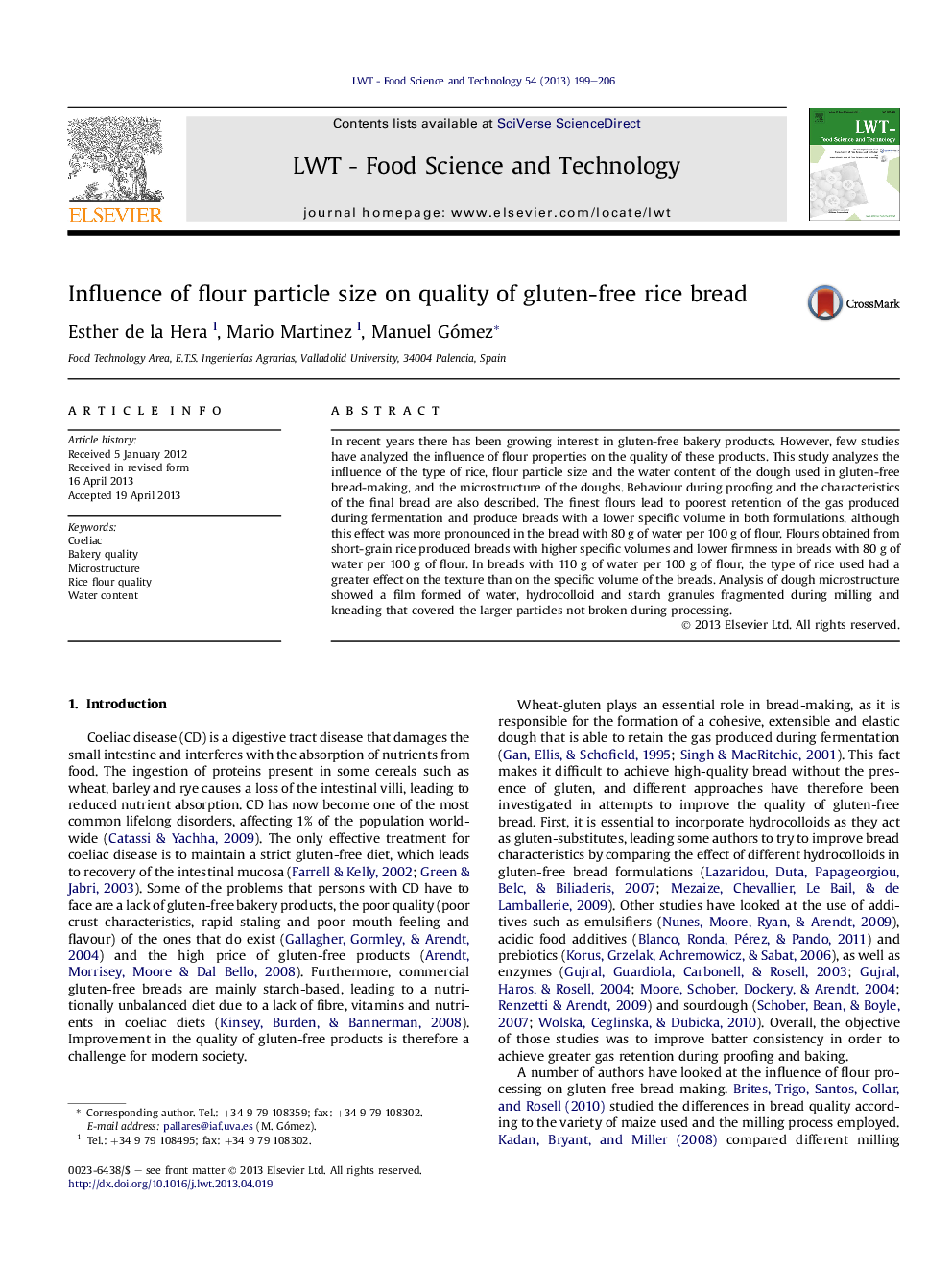| Article ID | Journal | Published Year | Pages | File Type |
|---|---|---|---|---|
| 6404219 | LWT - Food Science and Technology | 2013 | 8 Pages |
â¢Influence of rice flour properties on gluten-free bread was studied.â¢Finest flours had the worst behaviour in breadmaking.â¢Type of rice influenced the volume and texture of breads.â¢Less hydrated breads were greater influenced by rice flour properties.
In recent years there has been growing interest in gluten-free bakery products. However, few studies have analyzed the influence of flour properties on the quality of these products. This study analyzes the influence of the type of rice, flour particle size and the water content of the dough used in gluten-free bread-making, and the microstructure of the doughs. Behaviour during proofing and the characteristics of the final bread are also described. The finest flours lead to poorest retention of the gas produced during fermentation and produce breads with a lower specific volume in both formulations, although this effect was more pronounced in the bread with 80 g of water per 100 g of flour. Flours obtained from short-grain rice produced breads with higher specific volumes and lower firmness in breads with 80 g of water per 100 g of flour. In breads with 110 g of water per 100 g of flour, the type of rice used had a greater effect on the texture than on the specific volume of the breads. Analysis of dough microstructure showed a film formed of water, hydrocolloid and starch granules fragmented during milling and kneading that covered the larger particles not broken during processing.
